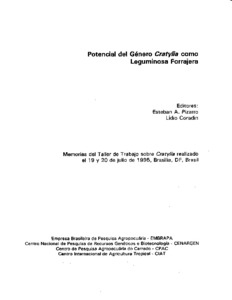Introducción y evaluación de leguminosas forrajeras arbustivas en el Cerrado brasileño
Between 1991 and 1995, 10 genera and 88 accessions of shrub species were evaluated in the Brazilian Cerrados. The total cumulative DM production of these species during the first year of growth ranged between 0.5 t/ha for Cratylia argentea CIAT 18516 and 2.5 t/ha for Mimosa sp. CNPAB 0040. Among the accessions of C. argentea, production ranged between 0.5 t/ha (CIAT 18516) and 2.2 t/ha (CIAT 18675). Although C. argentea CIAT 18516 is the accession that has been most widely tested in Central America, its production was the lowest in this evaluation. Despite the limited number of accessions of this legume that are available and have been evaluated, large variations have been observed in leaf and stem production and in leaf:stem ratios. Variation has also been found in quality crude protein, in vitro dry matter digestibility. The development and distribution of the root system of four contrasting Cratylia accessions was evaluated. Preliminary results, 4.5 years after seeding, suggest that the greater production capacity and leaf retention of Cratylia during the dry season, as compared with Leucaena, may be related to the root system. Roots of C. argentea CIAT 18516 and 18675 reached a depth between 1.80 m and 1.30 m, respectively, while those of Leucaena BRA-001 911 only penetrated up to 0.65 m and those of cv. Texas, up to 0.40 m.

